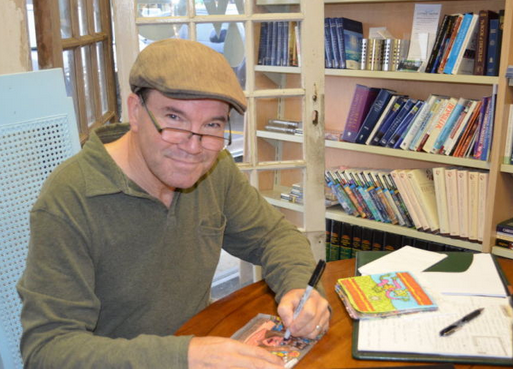Diebenkorn
I fell in love with Diebenkorn’s work very early on, when I was still an undergraduate. His work has kept with me and influenced me for many decades, for the color, the depth of layering (that you can only really see in its complexity when you see them in person, as is true of Pollack and Picasso). It also has stayed with me because it is warm and joyful and beautiful. His work makes my eyes happy.
Diebenkorn is one of many California artists that share a love of color, often reflective of the california landscape. He first made his mark in the art world in the 1950s as a west coast practitioner of the reigning east coast ‘Abstract Expressionist’ school of painting. You can very easily see the influence of Willem de Kooning in color and brushstroke. You can see the hints of a landscape in the horizontal elements, something that will never leave his work for his entire career.
Just about the time Abstract Expressionism really got big, Diebenkorn abandoned it and moved back into representational work. He still has the great color and brushwork, but he is now allowing recognition of landscape and figures to come through. This is the work that I saw first and it was a revelation to me because it was so profoundly, perfectly composed. It had such inherent beauty in the color and brushstrokes that you didn’t even need to see a landscape or figure in the work. the paint itself was enough. But add in the references to the world around him and I felt like I was experiencing what a visual poet would say.
And, as is most often the case, the best painters turn out to be the best draftsmen too. Even though this is a recognizable and not all that unique pose of a female nude, it has Diebenkorn all over it. From the erased but still visible marks, to the filling up of the space with the figure it is obvious his concerns are the same as if he was doing a landscape painting. It’s about shape and form and beautifully precise composition. Take a look at the edges of the drawing. That is where you can really see the similarity to his paintings. There are always shapes and forms that combine straight and curved lines that hug the edge of the image. That is where a lot of the action is, and will continue to be in his work.
Turns out Diebenkorn was quite contrarian. When the abstract movement faded and pop and other art movements became popular Diebenkorn abandoned his figurative and landscape imagery and once again returned to abstraction. He never left the hints and feeling of landscape behind but there were no longer direct references to it. This time, his foray into abstraction wasn’t reminiscent of anyone. It was all uniquely his. His Ocean Park series took up almost the entire rest of his life from the late 60s until his death in 1993.
I loved his representational work but when I saw his later abstract work I was even more moved. I fell in love with him as the ‘Matisse’ of my era, refining and reducing beauty to it’s essence and then pouring in a healthy dose of joy and happiness.
And finally, an image that is one of my personal favorite of his. It’s my favorite because the paint is wonderful and the place is wonderful.
If you ever are wondering what a person mean when they say, “That artist has a very unique style, you can always tell it’s his or her work, no matter the subject or the medium.” Take a look at Diebenkorn’s work and you will know what they are talking about.
_________________________
Fall/Winter 2016
Winter/Spring 2015
Summer 2014
Winter 2012/2013
- Week #5 – Francisco Goya
- Week #4 – Robert Irwin
- Week #3 – Veruschka
- Week #2 – Albrecht Durer
- Week #1 – Roger Brown
Winter 2011/2012
- Week #10 – Coco Larrain
- Week #9 – Nina Levy
- Week #8 – Andy Goldsworthy
- Week #7 – Wayne Thiebaud
- Week #6 – Richard Diebenkorn
- Week #5 – Roy Lichtenstein
- Week #4 – Thomas Hart Benton
- Week #3 – Edward Hopper
- Week #2 – Henri Matisse
- Week #1 – Rembrandt
___________________










i loved that retrospective we saw in l.a. it was a revelation to see an artist’s progression. and i’ve always remembered what you said about the best painters being wonderful draftsmen. good stuff marty.
Thanks Lisa, he is an amazing artist. Another example of that – I remember never liking Andrew Wyeth’s paintings as I was growing up, thinking they were sort of cliche and sappy. But then I saw his drawings and they were so exquisite that I had to take another look at his paintings and saw them in a new light. It’s like seeing the mind of the artist in action.
“His work makes my eyes happy.” <– beautiful!!!
Thank you for showing the work in a gallery setting – it made me gasp, and then go back and look again at the works in the post with a different perspective. It also made me realize I need to go visit some art galleries. I'm here in the San Francisco Bay Area – all I have to do is hop on a train!
Fabulous post, I love abstract!
Sidney, you are welcome. His work really is some of the best painting in the 20 century if you ask me. And yes, a bit of Hopper comes through.
Of course we see what we want to see, but I see some Hopper here. Thanks for the introduction, Napkin Dad.
Funny how Edward Hopper has that same feeling. Maybe I should do a ‘waiting around for nothin’ series!
All these images evoke a ‘waiting for something’ feeling in me… a sort of bored, sunday afternoon waiting feeling.